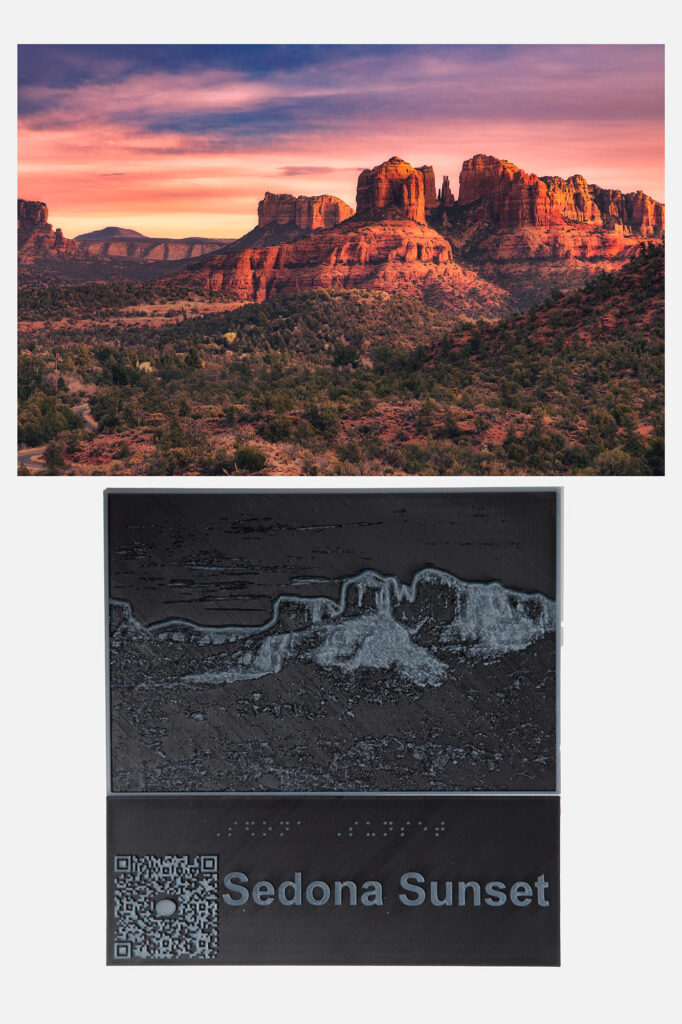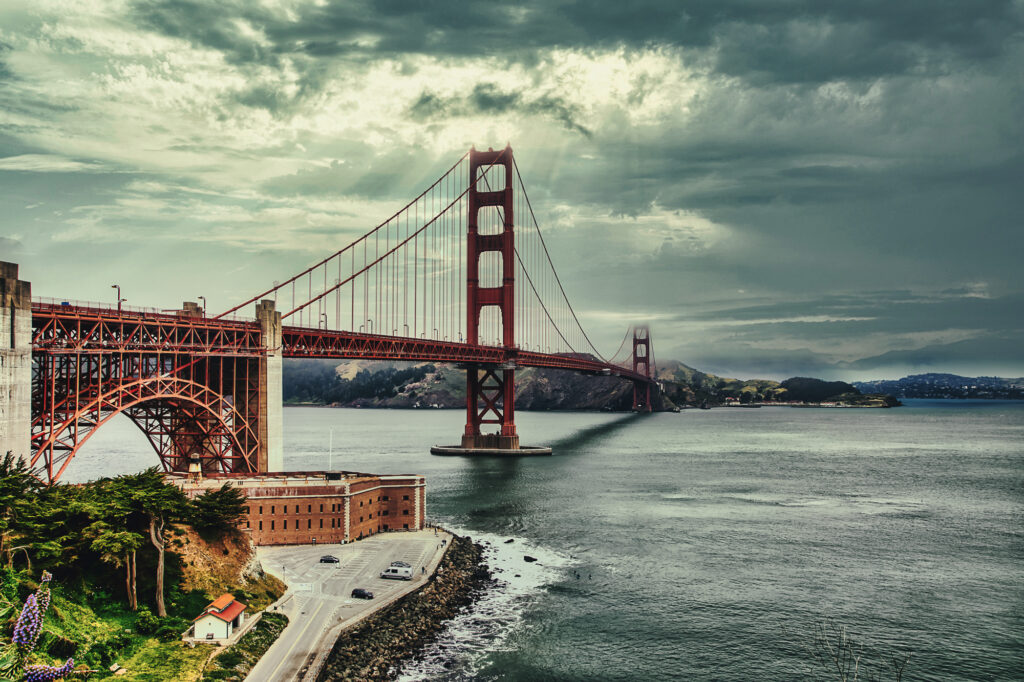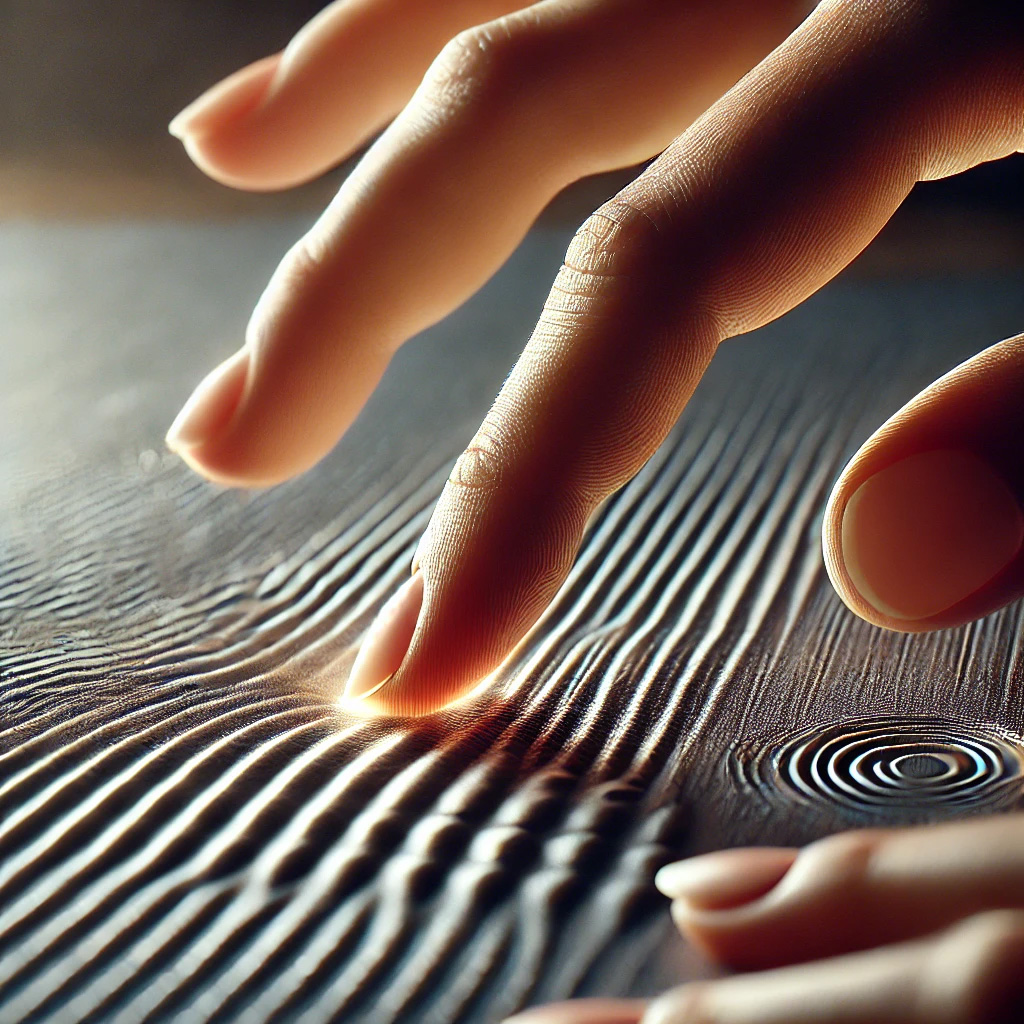
What if you could touch a sunset?

A different way to experience visual art.
We have developed a process which can extract the light (luminosity value) and texture from a photograph and converts it into a multilayered 3d printable file allowing viewers to touch the light and texture in photographs, paintings and more.
These tactile prints are a bit larger than a traditional 5 X 7 photo print, making them the perfect size for viewers to enjoy the rich textures without getting lost in a large composition. Our tactile prints are created in high contrast duo colors for those who are partially sighted. Our prints also work well for those who are colorblind, allowing the individual to experience color through touch.
Each tactile print is shown with a 3d printed identity plate which includes a braille label, tactile QR code and traditional text label. When the QR code is scanned with any cell phone, the viewer is given an audio description of the original photo, including the time of day the image was taken, the mood of the photo and other interesting bits of information – even a small bit of history in the case of iconic landmarks like the Courthouse Towers in Arches National Park. The viewer is then walked through the features of the tactile rendering, detailing each piece of geometry in the tactile print.
Touchable Art
Our tactile prints made their debut to rave reviews at the 2024 National Federation of the Blind National conference in Florida, the largest gathering of blind and low vision individuals in the United States.
Our work has been featured in numerous podcasts, news articles, and documentaries. We dream of a world where accessibility in visual art is part of creating a new exhibition rather than an afterthought.
Our tactile prints allow viewers who are blind or visually impaired a way to experience visual art like they never have before.

What We Do
Our process extracts the textures and light values from any photograph and converts them into a 3D file. This file is then printed using a 3D printer to create a touchable version of the image.
Our Journey
The development of our process was made possible by a generous grant from the Andy Warhol Foundation for Visual Art and the Redline Contemporary Art Center of Denver. Initial versions of the process only extracted light from the image, but resonated well with our viewers. We wanted more, and our 2.0 version of the extraction process has doubled the output resolution of our prints and allows us to create up to 10 distinct layers in the height map of our compositions.
Join us in our journey to make art accessible for all.
In the first six months since its debut, our tactile prints have been shown at three large exhibitions and we have completed two permanent installations. We are excited to offer tactile print creation to museums, galleries and artists. If you would like to work with us, please drop us a message on our contact page.
Artists and art institutions who embrace accessibility in their work are contributing to a more inclusive society and positioning themselves to thrive in a dynamic and ever-evolving artistic landscape. These artists and institutions are breaking down barriers and demonstrating their commitment to equality and diversity. In this journey, we envision a world where artists are not confined by traditional boundaries and where the beauty of art is not limited by the sense of sight. This transformation is not just a social imperative; it’s an artistic evolution.
Our Mission
Our mission is to make art accessible to those who cannot see it. We are passionate about creating tactile art that allows visually impaired individuals to experience and enjoy the beauty of photography, paintings and so much more.

The Importance of Accessible Art

Accessibility for all.
Our process makes visual art accessible for everyone, not just those who are visually impaired. These prints also work well for those who are colorblind allowing them to experience color through touch. We have found that even fully sighted people gain a stronger connection to a piece of art when they can touch it.
Accessibility Meets Visual Art
We’re passionate about making art accessible to everyone, especially those who are visually impaired. Our tactile prints offer a new way to experience the visual world, allowing individuals to connect with art on a deeper level – through touch. Each tactile print comes with a scannable tactile QR code that provides a detailed audio description of the image, guiding the viewer through its features and textures.


Let’s Create Together!
We’d love to discuss how our tactile prints can help your make art more accessible. Whether you’re an artist, gallery owner, or simply someone who appreciates the beauty of the world, we can work together to create a truly unique and meaningful experience.
